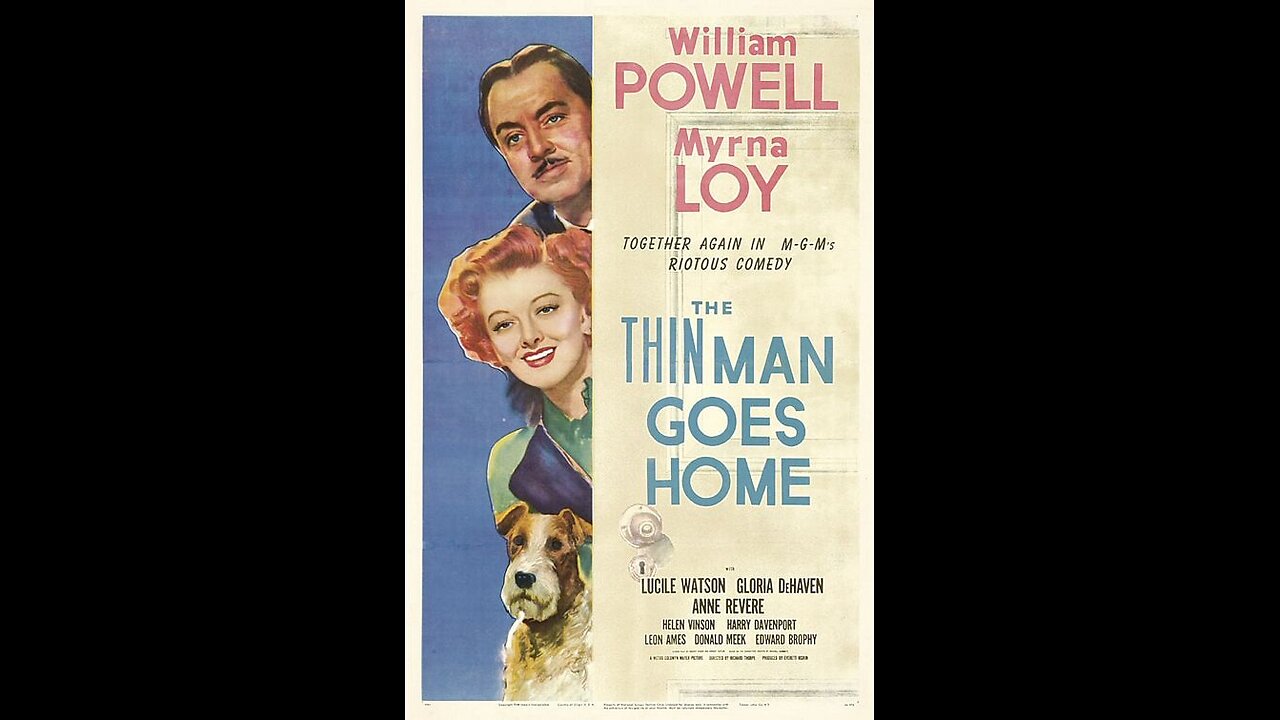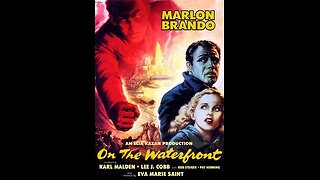Premium Only Content

The Thin Man Goes Home (1945) | Directed by Richard Thorpe
"The Thin Man Goes Home" is the fifth installment in the "Thin Man" film series, directed by Richard Thorpe. The film once again follows the sophisticated and witty detective couple, Nick (William Powell) and Nora Charles (Myrna Loy). In this installment, Nick decides to take Nora to visit his family in the small town of Sycamore Springs. However, their plans for a peaceful vacation are disrupted when a murder occurs in town. Nick, despite his intention to stay away from detective work, can't resist getting involved in solving the case.
Continuation of Nick and Nora's Charm:
The film continues to capitalize on the undeniable chemistry between William Powell and Myrna Loy as Nick and Nora Charles. Their banter, playful interactions, and genuine affection for each other remain the heart of the "Thin Man" series. Powell's charismatic portrayal of the witty detective and Loy's vivacious performance as his equally quick-witted wife continue to be a driving force in the success of the film.
Blend of Mystery and Family Dynamics:
Unlike previous installments, "The Thin Man Goes Home" introduces a new layer to the narrative by delving into Nick's family background. The film skillfully balances the murder mystery with the dynamics of Nick reconnecting with his estranged family. The exploration of Nick's past adds depth to the story, making it a unique entry in the series.
Humor and Wit:
True to the series, the film maintains the trademark blend of humor and wit. Nick Charles's dry and sophisticated humor, coupled with Nora's charm, infuses the film with delightful comedic energy. The dialogue is sharp, and the banter between the characters adds to the overall lighthearted atmosphere, even in the midst of a murder investigation.
Small-Town Setting and Atmosphere:
The shift to a small-town setting in Sycamore Springs brings a new atmosphere to the film. The quaint and idyllic surroundings create a contrast to the urban settings of the previous films. The cinematography captures the charm of the small town, and the change of scenery adds an interesting dimension to the story.
Cinematic Style and Direction:
Richard Thorpe's direction maintains a balance between the series' established style and the new elements introduced in this installment. The film's visual style retains the elegance and sophistication of the "Thin Man" series while incorporating the rustic charm of a small-town setting. Thorpe's direction ensures a cohesive and engaging viewing experience.
Musical Score and Tone:
The musical score, composed by David Snell, complements the film's tone, enhancing both its comedic and mysterious elements. The use of music contributes to the overall atmosphere, creating a soundtrack that aligns with the series' signature style. The film's musical choices enhance key moments, adding to the overall cinematic experience.
Exploration of Nick's Past:
One of the notable aspects of "The Thin Man Goes Home" is the exploration of Nick's past and his relationship with his family. This addition to the narrative provides a new layer of character development, offering insights into Nick's background and motivations. It adds a personal touch to the usual detective story.
Legacy and Series Continuity:
While "The Thin Man Goes Home" may differ slightly in its setting and narrative focus, it seamlessly continues the legacy of the "Thin Man" series. The film's success lies in its ability to maintain the spirit and tone of its predecessors while introducing new elements to keep the series fresh and engaging.
Conclusion:
"The Thin Man Goes Home" successfully combines the series' classic elements of mystery, humor, and the charismatic duo of Nick and Nora Charles. With its unique exploration of Nick's past and the addition of a small-town setting, the film adds a refreshing twist to the beloved detective comedy series. It remains a delightful entry in the "Thin Man" series, showcasing the enduring charm and appeal of the dynamic detective couple.
-
 1:47:41
1:47:41
Classic Films & Movies Archive
6 days agoOn the Waterfront (1954) | Directed by Elia Kazan
133 -
 12:58
12:58
NinjaGamblers
10 hours ago $11.59 earnedIs This The BEST Way to Win At Roulette? 😲
91.9K12 -
 1:01:54
1:01:54
CharLee Simons Presents Do Not Talk
2 days agoCALIFORNIA'S DONE!
61K27 -
 7:33
7:33
MudandMunitions
1 day agoUnboxing My FIRST Revolver! Smith & Wesson 442 .38 Special and What’s Coming Next for the Channel
82.5K12 -
 1:01:05
1:01:05
Trumpet Daily
1 day ago $10.04 earnedGermany Started Two World Wars and Now Wants Nuclear Weapons - Trumpet Daily | Mar. 7, 2025
69.1K78 -
 57:07
57:07
Stephen Gardner
1 day ago🚨BREAKING: Musk STUNS even Trump with LATEST FRAUD DISCOVERY!!
196K442 -
 2:26:47
2:26:47
FreshandFit
20 hours agoRatchet Chick Gets Kicked Out "Gracefully" For THIS...
190K200 -
 2:05:17
2:05:17
TimcastIRL
23 hours agoDemocrat ACTBLUE In CHAOS, Theories Over DOGE Cutting SLUSH FUND Go Wild w/Hotep Jesus | Timcast IRL
324K284 -
 1:11:43
1:11:43
Roseanne Barr
1 day ago $76.00 earned"They are all Monsters" | The Roseanne Barr Podcast #89
167K198 -
 9:26:16
9:26:16
Dr Disrespect
1 day ago🔴LIVE - DR DISRESPECT - WARZONE - PR ATTEMPTS
193K35